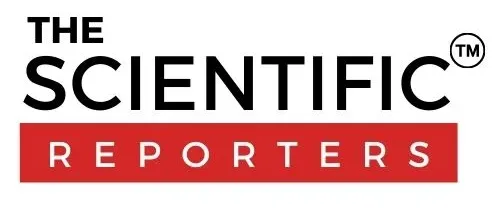Prime editing is a new gene editing tool that has been developed by researchers at the Broad Institute of MIT and Harvard. It is a versatile and precise gene editing technique that has the potential to correct or insert specific genetic mutations in the human genome, which could lead to the development of new treatments for genetic diseases.
The prime editing tool combines two key components: a modified version of the CRISPR-Cas9 protein and a new type of RNA molecule called a prime editing guide RNA (pegRNA). The pegRNA is designed to direct the CRISPR-Cas9 protein to the desired location in the genome, and also contains a template for the new DNA sequence that will be inserted into the genome.
Prime editing has several advantages over traditional CRISPR-Cas9 gene editing. It allows for more precise editing of the genome, as it can insert new genetic material without creating double-strand breaks in the DNA. It can also correct or replace genetic mutations without the need for a donor DNA template, which is required in traditional CRISPR-Cas9 gene editing.
However, prime editing is still a relatively new technology and more research is needed to fully understand its potential and limitations. While it holds great promise for the treatment of genetic diseases, it is important to ensure that it is used ethically and responsibly.
Components of prime editing tool
Prime editing is a fusion of two different types of proteins: a CRISPR-Cas9 protein that targets a specific location in the genome, and a reverse transcriptase enzyme that can copy RNA into DNA. In addition to these components, the prime editing tool also includes a prime editing guide RNA (pegRNA), which contains the desired sequence changes that are to be introduced into the genome.
The prime editing tool has several components, including:
- Cas9 enzyme: The Cas9 protein is an endonuclease that can cut DNA at a specific location guided by the pegRNA. It is a key component of the prime editing tool.
- Reverse transcriptase: The reverse transcriptase enzyme is a component of the prime editing tool that can convert RNA to DNA, allowing the desired sequence changes to be incorporated into the genome.
- Prime editing guide RNA (pegRNA): The pegRNA is a modified version of the traditional guide RNA used in CRISPR-Cas9 editing. The pegRNA not only guides the Cas9 protein to the target site but also carries a sequence of RNA that directs the reverse transcriptase to make specific changes to the DNA sequence.
- Donor DNA template: In some cases, a donor DNA template may be required to introduce specific sequence changes into the genome. This is not always necessary, as prime editing can introduce changes without the need for a donor template.
Overall, the prime editing tool combines the specificity of the CRISPR-Cas9 system with the precision of reverse transcriptase to enable precise and efficient genome editing.
How prime editing tool works?
Here’s how the prime editing tool works:
- Targeting the desired location: The prime editing tool first uses the CRISPR-Cas9 system to guide the Cas9 protein to a specific location in the genome that is to be edited. The Cas9 protein then makes a single-strand break in the DNA at that location.
- Creating a primer: The prime editing guide RNA (pegRNA) contains a template sequence that is complementary to the target site in the DNA. The reverse transcriptase enzyme uses this template sequence as a primer to extend the DNA strand at the site of the break.
- Incorporating desired changes: As the reverse transcriptase extends the DNA strand, it incorporates specific changes to the sequence that are dictated by the template sequence in the pegRNA. This can include single-base changes, insertions, or deletions.
- Finalizing the changes: Once the desired changes have been incorporated into the DNA strand, the strand is ligated back together to form a complete, edited DNA sequence.
Overall, prime editing offers a more precise and efficient way of making changes to the genome, with fewer off-target effects than other genome editing technologies. It is still a relatively new technology, and ongoing research is exploring its potential applications in areas such as disease treatment and agriculture.
Advantages and disadvantages of prime editing tool
Prime editing is a relatively new genome editing technology that offers several potential advantages over other genome editing techniques. However, it also has some limitations and potential disadvantages. Here are some of the main advantages and disadvantages of the prime editing tool:
Advantages:
- High precision: Prime editing is designed to be highly precise, allowing for the introduction of specific changes to the genome with minimal off-target effects. This is because the tool uses a combination of the CRISPR-Cas9 system and reverse transcriptase to direct changes to the genome with a high degree of accuracy.
- Versatility: Prime editing can be used to make a wide range of edits to the genome, including single-base changes, insertions, and deletions. This means it has the potential to be used in a variety of applications, including disease treatment, agriculture, and synthetic biology.
- Efficiency: Prime editing is generally more efficient than other genome editing techniques, such as homology-directed repair (HDR), which can be time-consuming and require a donor DNA template.
Disadvantages:
- Complexity: Prime editing is a complex process that requires multiple components, including the Cas9 protein, pegRNA, and reverse transcriptase. This can make it more challenging to use than some other genome editing techniques.
- Off-target effects: While prime editing is designed to be highly specific, there is still the potential for off-target effects. Some studies have suggested that prime editing can produce more off-target effects than other genome editing techniques.
- Limited editing window: Prime editing has a limited editing window, meaning that it can only be used to make changes within a specific range of the genome. This may limit its usefulness in certain applications, such as gene therapy for certain genetic diseases.
Prime editing represents a promising new approach to genome editing, with several potential advantages over other techniques. However, as with any new technology, ongoing research is needed to fully understand its limitations and potential applications.
Follow The Scientific Reporters for such interesting articles! Connect with us for any queries.






















